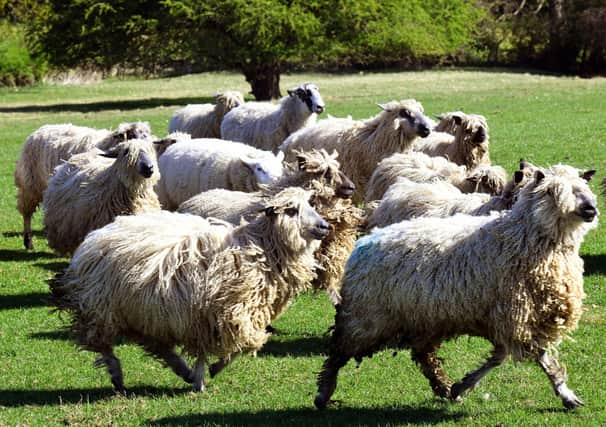FARMING: Farmers are feeling the heat


Lack of grass is becoming a concern, ewes are starting to lose condition, and lamb growth rates may reduce. Extra feed may be needed like creep for lambs or calves which provides a good food conversion rate with young stock and may reduce the demand on the dams.
The optimal temperature range for livestock is 12-18°C (when they are at their happiest and most productive), but their comfort zone is 5 -25°C. Anything above 25°C and they will start to suffer from heat stress. This affects health and production in many different ways; decreased dry matter intake (DMI), decreased milk yield, decreased fertility, and other health issues, for example mastitis and increased lameness.
Advertisement
Hide AdAdvertisement
Hide AdAnimals can drink up to twice as much water when the temperatures rise, so have good availability and ensure it is always fresh and clean. As natural water sources run low, it may be necessary to provide alternative water supplies.
Warmer weather brings the flies which are a nuisance but also spread disease in cattle and sheep. Controlling flies is important for cattle and if necessary avoid grazing high-risk fields such as those close to rivers and woods in the dry warm months. A good fly repellent pouron should be used at turnout to reduce irritation to cattle as well as preventing eye problems and summer mastitis.
We have seen some fly strike already in ewes and although dry at the moment and although rain would be very welcome; it could result in an upsurge of fly infestations.
Fly strike is caused by the larval stages (maggots) of the blowfly Lucilia sericata (greenbottles) affects around 80% of UK sheep flocks each year. The severity of fly strike is highly variable depending on several factors including the weather. Even very small fly strike lesions cause disrupted grazing and rapid weight loss. Failure to treat promptly can lead to reduced performance, secondary infections and death. Female flies are attracted by the odour of decomposing matter such as wounds, soiled fleece or dead animals. Footrot lesions, dermatophilosis (lumpy wool), and urine scalding around the prepuce also attract egg-laying adult flies. Scouring lambs are susceptible so preventing diarrhoea caused by parasitic worms will greatly reduce the risk of blowfly strike on the breech.
Advertisement
Hide AdAdvertisement
Hide AdThe blowfly season usually extends from May to September but with changing climate, the season can be from March through to December in some regions. Parasite control plans should include blowfly protection during the fly-risk period and fit with the need to control other parasites. Treatment with topical preparations containing the insect growth regulators (IGRs) cyromazine and dicyclanil, which prevent blowfly strike, should be applied before the identified risk period; – Cyromazine provides protection against blowfly strike for up to 10 weeks. - Products containing dicyclanil afford 8-19 weeks’ protection against blowfly strike depending on product choice. Repeat treatments may be required, depending on the product used, and season length, necessitating careful planning when treating lambs due to the long meat withdrawal periods.
Pour-on preparations containing cypermethrin provide protection against fly strike for up to 6 to 10 weeks. These products can also be used for the treatment of active maggot infestations. However, do not apply to raw areas as it can cause toxicity.
Deltamethrin spot-on products are used for treatment of blowfly strike only and provide no protection. Diazinon dips treat active maggot infestations and provide good protection against blowfly strike for
up to 6 weeks. We are happy to discuss which products are most suitable for your system.